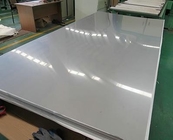-
Stainless Steel Round Pipe
-
Stainless Steel Welded Pipe
-
Stainless Steel Seamless Pipe
-
Carbon Steel Pipe
-
Galvanized Steel Pipe
-
Stainless Steel Sheet Plate
-
Angle Steel Profile
-
Stainless Steel Round Bar
-
Aluminum Alloy Sheet
-
Stainless Steel Coil
-
Galvanized Steel Sheet
-
Copper Tube Pipe
-
Copper Alloy Plate
-
Copper Strip Roll
-
Aluminum Alloy Foil
-
Tinplate
-
Other Alloy Metals
-
Rectangular Steel Pipe
Metal 304 202 Stainless Steel Sheet Plate Ss 321 Plate 12x12 24 X 24 24 X 36 24 X 48

Contact me for free samples and coupons.
Whatsapp:0086 18588475571
Wechat: 0086 18588475571
Skype: sales10@aixton.com
If you have any concern, we provide 24-hour online help.
x| Name | Stainless Steel Sheet Plate | Type | SS Tube |
|---|---|---|---|
| Length | 2000/2438/2500/3000/3048 Mm | Width | 1000/1219/1250/1500 Mm |
| Processing Service | Bending, Welding, Decoiling, Punching, Cutting | Delivery Time | 7-15 Days |
| Surface | BA/2B/NO.1/NO.3/NO.4/8K/HL/2D/1D | ||
| High Light | Vespolari 12x12 stainless steel sheets,Vespolari stainless steel sheet metal plates,Vespolari stainless steel plates 321 |
||
321 stainless steel sheet
Type 321 Stainless Steelis a stabilized austenitic stainless steel similar to Type 304 but with a titanium addition of at least five times the carbon content. This titanium addition reduces or prevents carbide precipitation during welding and in 800 - 1500°F service.
Online consultationProject Introduction
Type 321 Stainless Steelis a stabilized austenitic stainless steel similar to Type 304 but with a titanium addition of at least five times the carbon content. This titanium addition reduces or prevents carbide precipitation during welding and in 800 - 1500°F service. It also improves the elevated temperature properties of the alloy. Type 321 provides excellent resistance to oxidation and corrosion and possesses good creep strength. It is used primarily in applications involving continuous and intermittent service temperatures within the carbide precipitation range of 800 - 1500°F.
Specifications
ASTM A240
Typical Applications
annealing covers, high-temperature tempering equipment, diesel and heavy duty automotive exhaust systems, firewalls, stack liners, boiler casings, welded pressure vessels, jet aircraft components, radiant super heaters, bellows and oil refinery equipment
Chemical Composition: ASTM A240
|
Element |
Type 321 |
|
Carbon |
0.08 max. |
|
Manganese |
2.00 max. |
|
Sulfur |
0.030 max. |
|
Phosphorus |
0.045 max. |
|
Silicon |
1.0max. |
|
Chromium |
17.00 19.00 |
|
Nickel |
9.00 12.00 |
|
Titanium |
5x(C+N) min. 0.70 max. |
|
Nitrogen |
0.10 max. |
Mechanical Properties
|
Type |
Yield Strength 0.2% offset (KSI) |
Tensile Strength (KSI) |
% Elongation (2" Gauge length) |
Hardness Rockwell |
|
321 |
30 min. |
75 min. |
40 min. |
HRB 95 max. |
Physical Properties
|
Density (lb./ in^2) @ RT |
0.29 |
|
|
Modulus of Elasticity in Tension (psi x 10^6) |
28.0 |
|
|
Specific Heat (BTU/°F/lb.) |
32 to 212 °F |
0.12 |
|
Thermal Conductivity (BTU/hr/ft^2/ft) |
212°F |
9.3 |
|
932°F |
12.8 |
|
|
Mean Coefficient of Thermal Expansion (in. x 10^-6 per °F) |
32 to 212°F |
9.2 |
|
32 to 600°F |
9.5 |
|
|
32 to 1,000°F |
10.3 |
|
|
32 to 1,200°F |
10.7 |
|
|
Electrical Resistivity (micro ohms - cm) |
at 70°F |
28.4 |
|
Melting Point Range (°F) |
2500 - 2550 |
Processing
Type 321 is non-hardenable by heat treatment. Annealing: Heat to 1750 - 2050°F, then water quench or air cool. Forming: Type 321 can be readily formed and drawn. Like most austenitic stainless steels, Type 321 work hardens and may require annealing after severe forming.
Welding
This particular alloy is generally considered to have comparable weldability to Types 304 and 304L. A major difference is the titanium addition that reduces or prevents carbide precipitation during welding. When a filler is needed, either AWS E/ER 347 or E/ER 321 is most often specified.
Corrosion
Type 321 exhibits excellent resistance to organic chemicals, dyestuffs, and a wide range of inorganic chemicals. It resists nitric acid well and the sulfur acids moderately. Long-time exposure in the 900 -1500F range may lower its general corrosion resistance, but the grade still shows improved resistance to intergranular corrosion compared to unstabilized grades.





